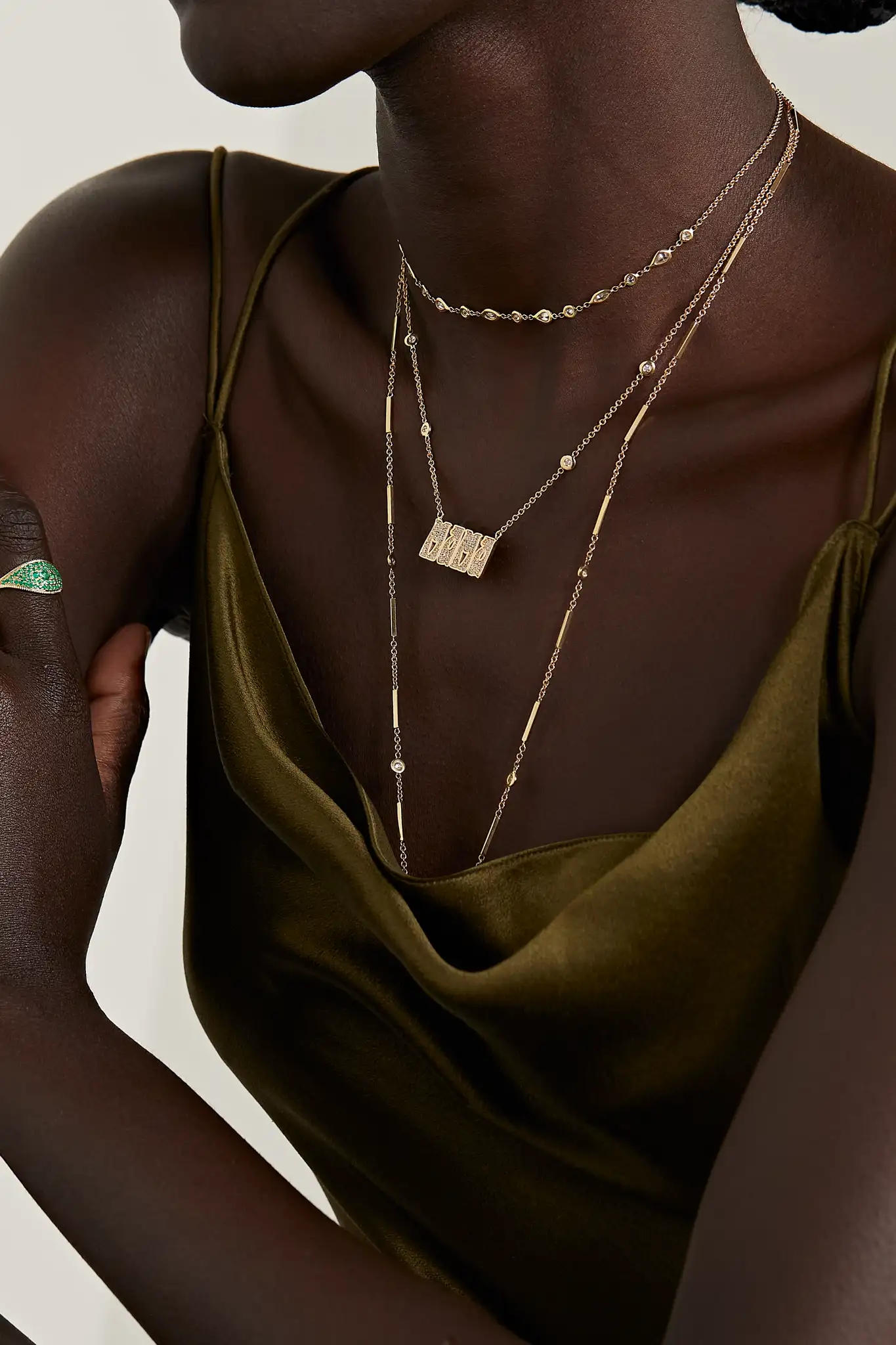About Moissanites
Moissanite is a naturally occurring mineral called silicon carbide, which is very rare and can’t be found in nature large quantities. Near-colorless, it was first discovered by Henri Moissan, a French scientist, from whom it gets its name. He originally found it in the crater left behind by a fallen meteorite.
Due to the rarity of natural moissanites it is practically impossible to use natural moissanite for jewelry as there isn’t enough to cut even a 1ct stone. As such, the Moissanite sold today, including ours is produced by laboratories.
Although they look similar at first glance, moissanite is very different from a diamond. Diamonds are made of carbon, whereas moissanites are made of pure silicon carbide. The Moissanites produced in the labs today are engineered to simulate the external properties of a diamond which gives it the illusion of similarity to natural diamonds.
Moissanite VS Diamonds
MOISSANITE DIAMONDS
MOISSANITE
DIAMONDS
DURABILITY
How well gemstones can hold up under stress.
BRILLIANCE
How well a gemstone is able to catch and <br>
reflect light from the interior of the gem.
COLOUR
The natural coloured appearance of a gemstone.
SIZE
PRICE
The cost per carat
MOISSANITE
DURABILITY
Moissanites are a 9.25 on the Mohs Scale of Hardness, making them fit for everyday wear and an excellent alternative to diamonds for wedding and engagement rings
BRILLIANCE
Moissanites have different kind of brilliance to diamonds. Their reflection pattern is different and is characterized by fiery, rainbow colorful flashes giving it a disco ball effect which some people enjoy and prefer as this typically appears more sparkly than a diamond especially in sunlight.
The bigger the moissanite, the more brilliant it is. Moissanite has a refractive index from 2.65 – 2.69, which is higher than a diamond.
COLOUR
With moissanites, because there are created in a lab, you can create almost any colour within the refractive index. From blue hues, to blacks, reds, oranges, greens and much more.
The colors are created through a special heating process with ion induction displaying beautiful colors on the surface of the gem.
This color treatment is permanent for as long as they are not exposed to excessive heat greater than 548° C. which is close to the temperature of the surface of the sun.
SIZE
While Moissanite, like diamonds, is sold by the carat, not all carats are produced equal. Moissanite is slightly lighter than diamonds.
If you have two round gemstones with the same measurement in millimeter, while they appear to be the same size, the weight will be different.
As a 6.5mm diameter DIAMOND weighs 1.00ct while a 6.5mm diameter MOISSANITE weighs 0.93ct.
Based on the weight, you may assume the diamond is the larger gemstone, however, the moissanite is the exact same size (6.5mm) as the 1.00ct diamond, it just weighs less.
PRICE
Just like with diamonds, the price of Moissanites is typically determined by its size. However, Moissanites are significantly lower in pricing than diamonds of the same millimeter size. For example a 6.5mm moissanite averages around £510.
DIAMOND
DURABILITY
Diamonds are the hardest known gemstones and are a 10.00 on the Mohs Scale of Hardness. This makes diamonds are very durable and suitable for every day wear. This is also why the make a very popular choice for wedding and Engagement jewelry.
BRILLIANCE
To the naked eye, a diamond can be distinguished from a diamond by its different type of reflection. Diamonds reflect light differently from moissanite and do not have as much of the rainbow effect that Moissanites do.
Diamonds reflect light in three different ways; as white light which is brilliance, rainbow light which is dispersion and surface sparkle which is scintillation. Together, all three are what gives diamonds their unique sparkle.
COLOUR
Natural diamonds come in a variety of colors. Typically, diamonds are made up of carbon atoms which are transparent and colourless. However, naturally-coloured diamonds are created when trace elements interact with the carbon atoms during the diamond’s creation. The presence of chemical elements such as nitrogen, sulphur, and boron can colour diamonds in shades of yellow, green and blue
Pink diamonds are the exception to this and are created by a distortion in the diamond’s crystal lattice, caused by intense heat and great pressure from all directions after the stone’s formation in the earth.
White diamonds are the most common, falling into the largest colour spectrum on the Diamond Grading Scale, which begins with “D” colour, meaning totally colourless, and ending with “Z” colour, which is pale yellow or brown.
SIZE
Since a diamond’s carat weight (CTW) is the more common standard of measurement, the mistake is commonly made to request for a 2.00ct moissanite stone, expecting it to be the same millimeter size as a 2.00ct diamond stone which it isn’t, a 2.00ct Moissanite would be bigger in millimeter.
To avoid this sort of error and any form of misunderstanding, we prefer to measure our Moissanites in millimeters so as to give a more accurate expectation of the final dimensions of your finished jewelry.
PRICE
Diamonds, whether natural or lab created for still remain the most expensive gemstones in the market. In contrast to a Moissanite of same size, A 6.5mm (1ct) diamond on the average costs between £2,300 to £5,300.

